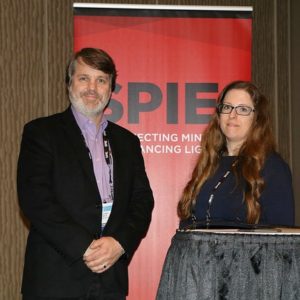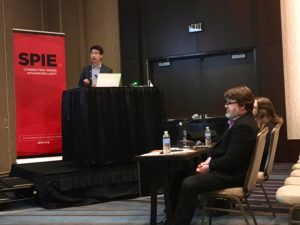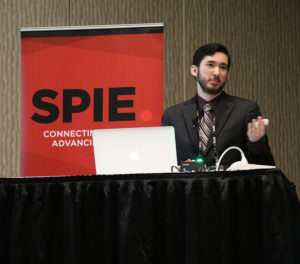SPIE 2018 Special Workshop organized by VISE steering committee member, Michael Miga
Last year, when SPIE put out a Special Issue Call for Papers in SPIE’s Journal of Medical Imaging, Harvie Branscomb Professor of Biomedical Engineering Michael I. Miga, PhD, proposed the first issue ever devoted specifically to image-guided procedures, robotic interventions and modeling.
Not only did SPIE welcome the idea, but it has become the largest subscribed special issue to date with 30 papers submitted.
 Lead guest editor Miga, Vanderbilt Institute for Surgery and Engineering (VISE) steering committee member, worked with guest editor, Amber Simpson, a VISE alumna currently in the Department of Surgery at Memorial Sloan Kettering Cancer Center, to ensure submitted papers were subject to vigorous peer evaluation by the SPIE Medical Imaging: Image-Guided Procedures, Robotic Interventions, and Modeling Conference scientific review committee.
Lead guest editor Miga, Vanderbilt Institute for Surgery and Engineering (VISE) steering committee member, worked with guest editor, Amber Simpson, a VISE alumna currently in the Department of Surgery at Memorial Sloan Kettering Cancer Center, to ensure submitted papers were subject to vigorous peer evaluation by the SPIE Medical Imaging: Image-Guided Procedures, Robotic Interventions, and Modeling Conference scientific review committee.
Acceptance into the journal’s special issue also included the opportunity to present during a special event workshop at the SPIE Medical Imaging 2018 conference. Dongqing Zhang, whose paper detailed post-operative process in cochlear implantation to improve hearing outcomes, was among the participants.
 “I think the area of image-guided surgical procedures, robotic interventions and modeling has been very active and people in this field are indeed contributing greatly to humanity’s welfare by developing cutting-edge engineering techniques for surgeries,” said Zhang, a graduate student in electrical engineering and computer science.
“I think the area of image-guided surgical procedures, robotic interventions and modeling has been very active and people in this field are indeed contributing greatly to humanity’s welfare by developing cutting-edge engineering techniques for surgeries,” said Zhang, a graduate student in electrical engineering and computer science.
“As a graduate student, I am excited to author a journal paper as a part of this special issue. I see this as great recognition as well as encouragement from this research community,” he said.
 Jon Heiselman, a graduate student in biomedical engineering and VISE trainee, was also afforded the special opportunity with his accepted journal paper.
Jon Heiselman, a graduate student in biomedical engineering and VISE trainee, was also afforded the special opportunity with his accepted journal paper.
What began as a simple call for ideas, turned into an empowering experience for VISE graduate students, who through their work have the opportunity to impact medical advancements in patient care more quickly.
“Peer reviewed journal papers are a big deal for our grad students,” Miga said. “Our students are expected to contribute to science and engineering in significant ways. The main metric used is a peer reviewed journal paper. The combination of the special issue publication and the special opportunity conference presentation allowed our scholars to amplify the impact of their cutting-edge VISE research.”

